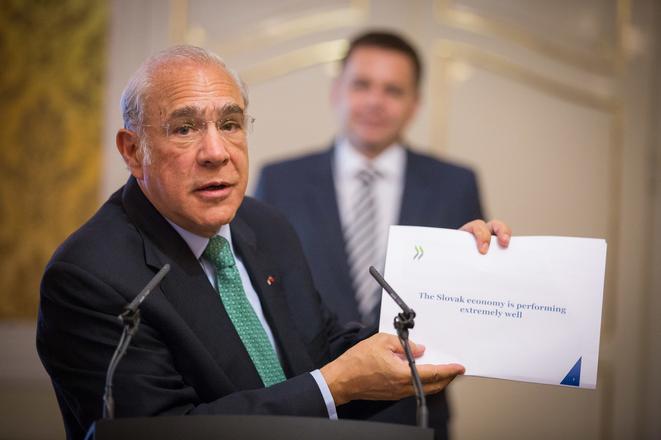Following the positive economic growth prediction of the Finance Ministry, two more institutions have confirmed the trend.
The National Bank of Slovakia (NBS), the country’s central bank, kept its macroeconomic forecast presented in the previous quarter. As a result, the economy is expected to rise by 3.2 percent this year, by 4.2 percent in 2018 and 4.6 percent in 2019.
Unlike the previous forecast, the central bank slightly revised its predictions for the increase in consumer prices. It decreased the outlook for the average increase in consumer prices by 0.2 percentage points to 1.2 percent this year, and by 0.1 percentage points for following two years, to 1.9 percent in 2018 and 2 percent in 2019, the SITA newswire reported.
The NBS also revised its employment prediction for this year, cutting it by 0.1 percentage points to 1.9 percent. For the following two years, however, it revised the forecast upwards, by 0.2 percentage points. As a result, employment is expected to increase 1.4 percent in 2018 and 1.1 percent the following year.
The revisions however have not affected the unemployment predictions. The central bank still expects that the number of the unemployed will continue decreasing, from this year’s 8.4 percent to 7.7 percent in 2018 and 7.1 percent in 2019, SITA wrote.

The NBS also kept its forecast for the increase in the nominal wage, which is expected to grow by 4.4 percent this year, by 4.8 percent next year, and by 4.9 percent in 2019.
On the other hand, it revised its forecast for a real wage increase. The bank increased the prediction for 2017 by 0.2 percentage points to 3.2 percent, and by 0.1 percentage points for 2018 and 2019, to 2.8 and 2.7 percent, respectively.
Meanwhile, the Organisation for Economic Cooperation and Development (OECD) confirmed the continuing growth in Slovakia’s GDP. It forecasts the economy will increase 3.3 percent this year, and 4.1 percent next year.
The organisation also expects a drop in the public debt which is projected to amount to 51.1 percent of GDP this year. Next year, it should decrease to 50.2 percent, the TASR newswire reported.
The OECD also confirmed the decrease in the number of unemployed, from this year’s 8.5 percent to next year’s 7.6 percent. Employment is expected to increase 1.6 percent in 2017 and 1.4 percent the following year.
As for inflation, the OECD forecasts that consumer prices will rise by 1.5 percent this year and by 2 percent in 2018, TASR reported.



 OECD Secretary General José Ángel Gurría (source: SITA)
OECD Secretary General José Ángel Gurría (source: SITA)